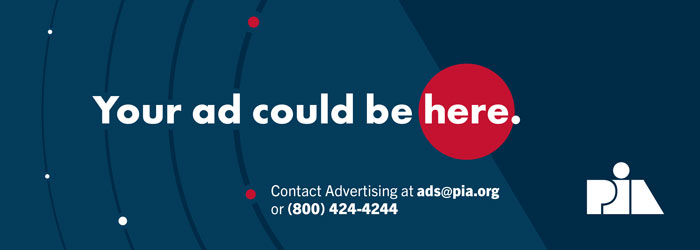Today’s job market is more competitive than we’ve seen in a long time. Candidates have options, which is why businesses are hyper-focused on doing everything they can to attract and retain top talent.
They’re finding out they must do more than just offer competitive salaries and benefits. Many business owners are realizing just how powerful a well-designed onboarding process is in getting skilled employees to come to their business and stay.
A well-designed onboarding process helps new employees feel welcomed, engaged and prepared for their roles. Strategies go beyond paperwork and orientation sessions. They focus on creating a seamless, personalized, and technologically advanced experience that fosters long-term employee satisfaction and productivity.
In addition, a strong onboarding experience reduces turnover rates, builds employee confidence, and helps establish a deep connection between new hires and the business’s mission and values.
Business owners who implement creative and forward-thinking onboarding strategies can significantly enhance workplace morale and performance.
We’ll explore innovative onboarding approaches that set businesses apart, including AI-driven processes, personalization and creative techniques.
The importance of effective onboarding
We can’t say this enough, but a well-structured onboarding process is essential for employee success, retention and overall company performance.
It helps new hires integrate seamlessly into the organization, increases engagement and enhances productivity.
Traditional onboarding methods (i.e., handing out an employee handbook and conducting a one-day orientation), often fail to fully engage or prepare employees for long-term success. This approach leaves employees feeling like they’ve been thrown into something, which then comes with frustration and embarrassment.
Studies show that employees who experience structured onboarding programs are 58% more likely to remain with the business for at least three years. A positive onboarding experience fosters a sense of belonging and helps employees quickly adapt to their roles and responsibilities because they’re trained on how to do their jobs successfully.
Businesses that invest in comprehensive onboarding programs experience higher retention rates and improved job satisfaction among employees. In contrast, ineffective onboarding can lead to disengagement and high turnover, costing businesses valuable resources in hiring and training new employees.
Focus on making onboarding interactive, informative, and supportive, and you’ll create an environment that enhances both employee satisfaction and overall productivity.
Leverage AI and technology for smarter onboarding
As technology advances, businesses have an opportunity to streamline and enhance their onboarding processes. This is especially true when it comes to artificial intelligence-driven solutions.
One of the best parts about using AI during the hiring process is that it can save you time. AI can automate several administrative tasks that you’re probably doing manually, such as document verification, searching for candidates and interview scheduling.
When your team members don’t have to focus on these tasks, they are free to focus on personalizing the onboarding and employee experience.
AI-driven systems can analyze candidate profiles and create personalized onboarding pathways that align with individual learning styles and career goals. AI chatbots can provide real-time assistance, answer questions, offer guidance and make onboarding more accessible—particularly for remote employees.
Additionally, AI-powered analytics can assess employee engagement and pinpoint areas for improvement in onboarding programs.
Carefully evaluate AI solutions to ensure they align with your organizational culture and employee needs. AI is a powerful tool, but human connections and mentorship remain critical to onboarding success.
The role of welcome gifts and thoughtful first impressions
First impressions matter. A warm, welcoming onboarding experience can set the tone for an employee’s entire tenure at an organization. One effective way to create a lasting positive impression is through welcome kits, branded merchandise and personalized gestures.
Beyond providing practical items, such as custom pens, drinkware, journals and notebooks, welcome kits can include personalized notes from leadership, swag that promotes brand pride, and curated content about company values and culture.
Businesses that invest in thoughtful onboarding experiences see higher levels of engagement and morale.
For example, Canon’s welcome box is designed to look like a camera and includes a polo shirt, pen drive, pencil, notebook, set of stickers and other high-quality items. The chosen items and how they’re carefully designed are meant to introduce new employees to the brand’s commitment to excellence.
These small but meaningful gestures make employees feel valued and connected to the organization from day one. Further, hosting a welcome lunch, assigning an onboarding buddy, or sending a personal video message from the CEO can enhance the onboarding experience.
A well-planned onboarding process with personalized touches can significantly boost employee engagement and satisfaction.
Measure and refine onboarding success
A successful onboarding program should be continuously evaluated and refined to ensure it meets the evolving needs of employees and the organization. You can assess onboarding effectiveness through various methods, including employee feedback surveys, performance tracking and retention analysis.
Important performance indicators to measure onboarding success include:
- employee satisfaction scores;
- time-to-productivity metrics;
- retention rates of employees;
- engagement levels during activities.
In addition to these indicators, business owners should seek qualitative feedback through structured interviews and one-on-one meetings. You can find out key information that helps you stay competitive, such as the modern benefits employees want or how to better adapt the onboarding process to each individual.
Conducting periodic check-ins at 30, 60, and 90 days allows you to identify potential challenges and address them proactively. Leverage data-driven insights to refine your onboarding strategies and address any pain points as much as you leverage the feedback that comes straight from candidates’ mouths.
By adopting a continuous improvement approach, you can create an onboarding experience that evolves with employee expectations and industry trends.
Conclusion
Investing in modern onboarding strategies is crucial to foster a strong, engaged workforce. Business owners that embrace AI-driven solutions, personalize onboarding experiences and continuously refine their processes can improve employee retention and productivity significantly.
A well-thought-out onboarding process does more than introduce employees to their roles. It establishes a strong connection between new hires and the organization’s values, goals and people. It also helps you avoid hiring mistakes that make it harder to attract the right candidates. With continuous improvement and a focus on employee well-being, you can ensure that your onboarding processes contribute to long-term success and satisfaction for both your employees and your organization.
Katie Brenneman
Katie Brenneman is a passionate writer specializing in lifestyle, mental health, education, and fitness-related content. When she isn't writing, you can find her with her nose buried in a book or hiking with her dog, Charlie. To connect with Katie, you can follow her on Twitter.





